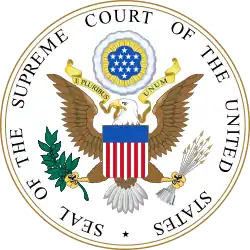42°21′20″N 71°06′35″W / 42.35553°N 71.10967°W
| Nectow v. City of Cambridge | |
|---|---|
 | |
| Argued April 19, 1928 Decided May 14, 1928 | |
| Full case name | Nectow v. City of Cambridge |
| Citations | 277 U.S. 183 (more) 48 S. Ct. 447; 72 L. Ed. 842 |
| Case history | |
| Prior | Appeal from Supreme Judicial Court of Massachusetts |
| Holding | |
| The governmental power to interfere by zoning regulations with the general rights of the land owner by restricting the character of his use cannot be imposed if it does not bear a substantial relation to the public health, safety, morals, or general welfare. | |
| Court membership | |
| |
| Case opinion | |
| Majority | Sutherland, joined by unanimous |
| Laws applied | |
| U.S. Const. amend. XIV | |
Nectow v. City of Cambridge, 277 U.S. 183 (1928), was a United States Supreme Court case in which the Court reversed the Massachusetts Supreme Judicial Court ruling, and found that the invasion of the plaintiff's property right was "serious and highly injurious," and that the placement of the locus of the zoning ordinance would not promote the health, safety, convenience or general welfare of the inhabitants of Cambridge.[1] It, along with Euclid v. Ambler, constituted the Supreme Court's case law on zoning until 1974.[2]
Facts
Since 1860, the family of Alvan Clark had owned a tract of land in Cambridge used by family's telescope lens manufacturing plant. The Clark family homes adjoined the Cambridgeport residential district to the west, and its factory adjoined the Ford Cambridge Assembly plant to the south. After their father's death, Clark's sons sold the 140,000-square-foot (3.2-acre) entire plot to Saul Nectow in 1920.[3]
The City of Cambridge established its first zoning ordinance in 1924, which restricted 29,000-square-foot (0.67-acre) area occupied by the housing units to residential uses. A purchaser had agreed to purchase the full tract, but reneged on the offer when the new zoning encumbered a portion of the tract. Nectow sought to enjoin the city for a regulatory taking that reduced the value of his property.
References
- ↑ Nectow v. City of Cambridge, 277 U.S. 183, 188 (1928).
- ↑ Tarlock, A. Dan (January 1982). "Euclid Revisited". Land Use Law and Zoning Digest. 34: 4–8. doi:10.1080/00947598.1982.10395481 – via Hein Online.
- ↑ Fischel, William A. (2014). "From Nectow to Koontz: The Supreme Court's Supervision of Land-Use Regulation". Retrieved November 15, 2023.
External links
- Text of Nectow v. City of Cambridge, 277 U.S. 183 (1928) is available from: Justia Library of Congress
- Case Brief is available from CaseBriefs.com